The neophyte DM often struggles with making encounters, NPCs, and adventures. The longer they ply the DM craft the better they become at doing those. After a few years of grinding adventures out a DM usually gets it. Like many things DMs will have that ‘A-ha!’ moment when all the puzzle pieces line up and understand how to craft basic, enjoyable adventures with ease.

But, it becomes muddled when transitioning from one-off adventures into an ongoing campaign. WOTC’s DMG focuses on creating individual adventures or creating a home brew world. But, glosses over the campaign; the critical connective tissue between the two.
Fear not, today you can level up your campaigns. Here are 10 Secrets to Creating a Great D&D Campaign.
10 Secrets to Creating a Great D&D Campaign
- 3 Active Fronts
- Make Simple Adventures
- Obstacles Not Plots
- The Hiccup Method
- Inigo Montoya Effect
- Character Spotlights
- Outside Opposition
- Failure Builds Character
- Small Stories
- Intrinsic Trumps Extrinsic
And a Bonus Secret
3 Active Fronts
I’ll admit I am not a huge fan of the Apocalypse World engine. I prefer more crunch in my RPGs, especially if they’re meant to be more than a one-off adventure. But, what the system did birth into the RPG zeitgeist is the Front. In its rawest form, the Front is a faction in your campaign that has a goal it is trying to achieve. In this case, it’s some bad force for the heroes to combat. Evil cults, the Drow, the evil dragon Fanx. By running three active fronts you’re engaging players in three, simultaneous adventures. This has some wonderful effects on the campaign.
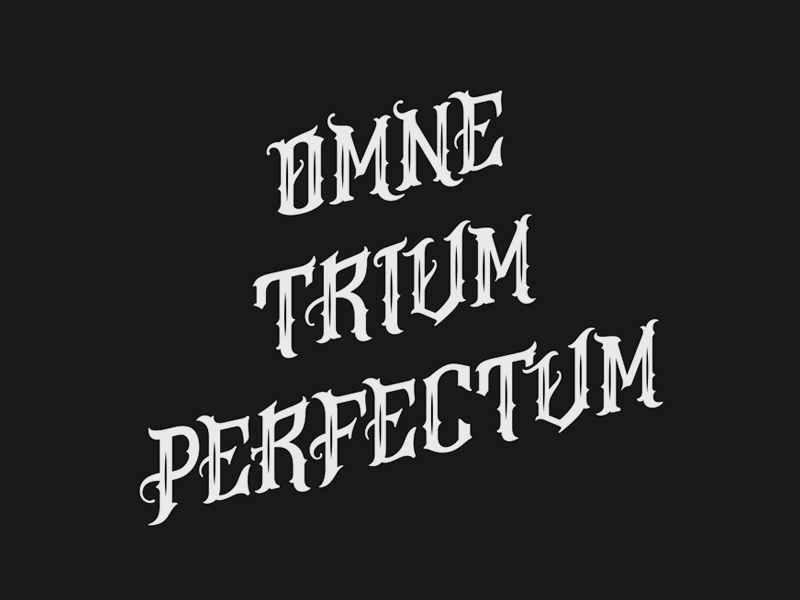
The BBEGS (Fronts) are always working towards their goal. And that’s visible to the PCs, through Apocalypse World’s Grim Portents. The adventurers walk through burned villages and pass refugees fleeing Fanx’s destruction. It provides a system that shows the world is moving outside the player characters. There’s always something going on in the world regardless of what the PCs do.
The more the PCs put off dealing with a specific Front, it draws closer to its goal and grows in power. The Front also becomes more difficult to stop. Game sessions for your players begin to emphasize choice. What Front do they attempt to foil next? Those familiar with XCOM: Enemy Unknown, understand this crisis management and idea of not being able to save everyone. It creates meaningful choices in game play and we know that is the crux of RPGs. And, those choices have consequences that can develop as Secret #5, Inigo Montoya Effect.
Make Simple Adventures
Luckily, I think people are starting to take to this idea. As Game of Thrones passes out of popular culture spotlight there’s less echo of it in tabletop gaming. Fewer grand political stories with pages of NPC VIPs. But, let’s discuss anyhow.

The ugly truth is players forget about stuff in the game. People have to remember adventure details between sessions over the course of weeks, months, even years in some cases. The second ugly truth is most players are lazy. Even if you made a cohesive wiki for all the NPCs, locations, and histories, they won’t read it. The more straightforward your adventures are the more successful your campaign will be. Make it easy for your players to remember what they’re doing, the price of failure, and the reward for success.
Your campaign is going to get complex. As stories unfold they accrue more information. More information means more complexity. This happens naturally, you don’t need to inject artificial complexity. The one exception to this idea is running a mystery adventure. By its very structure you shotgun blast the players with information out the gate. But, the adventure is about sorting through the info; developing a litmus for what info is important and what’s noise. But, that is for a self-contained adventure. Afterwards, the narrative purges all that information.
Obstacles Not Plots
Successful DMs learn this lesson early. No plot survives contact with PCs. Much less when it comes to the fickle nature of dice. Your PCs will kill the BBEG in one round, but stumble at a locked door. They’ll yeet critical NPCs off a cliff because they don’t like them, but will burn down the world for a throwaway NPC shopkeeper.
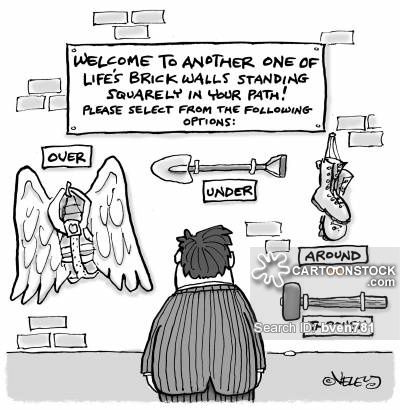
When you create an adventure, there’s a set end and usually a specific way to get there. Ye Olde Railroad. When you put an obstacle in the party’s path the solution avenues are open-ended. They could go over, under, around, or through. Usually, PCs deal with an obstacle by going through it: solving puzzles or killing monsters. However, you should encourage play that bypasses obstacles. Clever spells, stealth, misdirection and players who try to talk away the problems through bribes, lies, and intimidation. I like this mind set because it reinforces a natural aversion to injury and death.
Let’s say the Drow are seeking a relic to increase Lolth’s power. In a plot you might see how the PCs need to kill all the Drow. But, they could also find the relic first, find another way to weaken Lolth’s power. Pull a Belloq and let the Drow explorers plumb the dangerous ruins then steal the relic from them.
For many players, devising and executing a cool plan is the most fun RPGs offer. Even if the dice disagree and the plan falls apart forcing the PCs to scramble out of a situation gone sideways. Fiasco is an entire RPG dedicated to that, not to mention many movies. It’s a very fun situation at the table. And isn’t fun, memorable situations what we want in our games?
I sometimes play meta games while I’m playing D&D. Special “how I play the game” rules to make the game more interesting. It’s common in video games. Like no buying items, or no armor, or doing a very specific, non-optimal run. One of my meta games is attempting to avoid open combat. I try to lie, sneak, bribe, and magic my way around obstacles without rolling initiative. Or, if all else fails, I try to architect an ambush or trap. If you’ve never tried it I highly recommend it. It forces you to try and approach obstacles from a different angle. It helps tone down the murder in your murderhobo character.
The Hiccup Method
Now you’ve re-framed your mind about creating obstacles for your players rather than plots, you can begin using the Hiccup Method. The Hiccup Method is a very simple design idea. Take things that should be easy, automatic even, and add a hiccup. What gets in the way of a PC/NPC achieving their goal?
Let’s take the Drow relic from above. The Drow want to increase the power of Lolth (goal). But, they need a relic to do so (hiccup). What keeps them from getting the relic? They don’t know where it is (hiccup). Once they find it they must travel to get it. But, it’s in the heart of a dangerous jungle (hiccup). At the location is a ruined temple housing the relic. But, its 100% booby-trapped (hiccup).
Maybe your players are smart and cool, so they choose the Belloq method. They are going to ambush the Drow as they exit the temple ruins with the relic. But, when the Drow enter the door seals shut behind them (hiccup). Now the PCs have to find where the Drow are going to exit. Trespassing in the temple has also alerted the local ettercap natives and their giant spiders (hiccup).
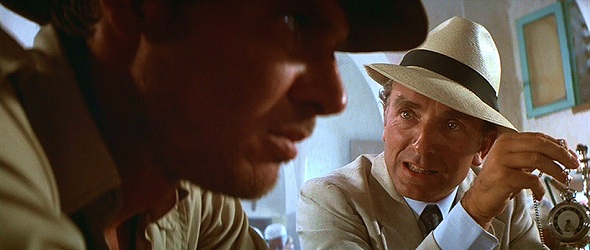
And you can continue adding hiccups ad nauseam. You may have noticed this is common in video game quest design. NPC X needs three items to do something for your benefit. You go to grab the items. Some of which you might actually have to deduce where they are (hiccup). When you get there you can’t get the item without running another small quest for the second NPC (hiccup). Or, it’s gated by some other encounter (hiccup).
The best thing about the Hiccup Method is it works just as well developing obstacles for NPCs. Very helpful if you have a Front the PCs are having a difficulty stopping and you need to inject an obstacle.
The Inigo Montoya Effect
As detailed in 3 Fronts, there should be repercussions to choices the players make. While they’re usually bad, they don’t have to be. For every completed adventure there are often some loose strings. NPCs the choices and actions the players made during the adventure effected. People who want to see good or bad come to the PCs and depending on the adventure actively work towards that goal.
You can blow your players away by an unsuspecting ally from a previous adventure show up at just the right time. Or, by having a forgotten adversary steal away an absolute victory. Don’t remember the random mook you killed years ago? “My name is Inigo Montoya. You killed my father. Prepare to die.”
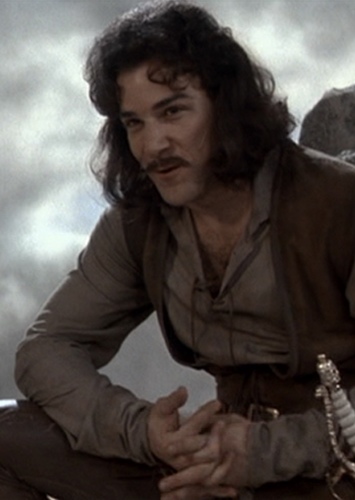
Remember the evil dragon Fanx the famous adventurers bypassed on their way to the Drow ruins? Well, a woman whose family died thanks to the adventurers’ inaction has vowed revenge. The PCs on their return from the ruins, Drow relic in tote, have stopped at a roadside inn for the night. The forgettable stable hand is, guess who. She listens all evening to the PCs talk about their grand adventure and rescuing the relic. And as they sleep she steals it as revenge and flees into the night. The PCs awake to find not just the relic, but the entire bag of holding gone. The PCs have a brand new hiccup and obstacle to overcome. Do they convince the woman to return the relic? Do they slay her without even asking why she did it? Only through a tear-stained note on her dead body to learn of her sorrow, rage, and oath of revenge on the party.
You can see how these secrets to creating a great campaign all start to blend together. It’s about creating that connective tissue between adventures to develop a natural narrative.
Character Spotlights
Maybe you’re not like me. When I make a character I always plot out some of their backstory, it’s part of the fun for me. Especially in a system like D&D 5e. The lower the level of the character the more similar they are to others. So by the time you’ve played your fifth, second-level human fighter there’s not much that separates it from the others. But, those characters could all have different backgrounds. Not just default to the Outlander background. Try and make them not an orphan so they have family. Who are they, where are they, what do they do, how do they feel about your PC becoming an adventurer?
It’s difficult to give that much thought to a character when what happened to your character before session one is never addressed by the DM. It’s the DM’s job to shine the spotlight on the characters. Usually when people talk about that they mean using things like the rule of cool and being on the players’ side. I’m saying, make adventures about the player characters.

Part of your responsibility during character creation is to promote a level of detail to your players’ character backgrounds. Sometimes that means only allowing one character to be an orphan. And the orphan must have their absent parents be a part of the game. Perhaps their character arc is one big Inigo Montoya Effect (a la Guardians of the Galaxy’s Drax the Destroyer). If your players aren’t like me and jump into a new PC by drafting a one page character history and family tree reference for the DM, help them. Ask questions, give them details about the world, help them make decisions. Work together to get them invested in the game world.
And most importantly, don’t make all the work for naught. Draw in the NPCs, locations, and past events of the PCs’ lives. Bring them to the forefront and have the characters deal with them. If there’s one thing I had to choose for why Matt Mercer is a great DM it would be that. Every character’s backstory bubbles to the surface during the campaign. Every PC has a personal story arc of conflict, resolution, and character growth.
If you can do this, you’ll never want for players at your table.
Outside Opposition
The PCs are the “Big Damn Heroes” of your campaign. Make no mistake. Yet, PCs and BBEGs aren’t the only powerful people in your world. Rather than say how powerful and evil a BBEG is, show other powerful factions struggling against the BBEG. Think of Lord of the Rings, it’s not a handful of hobbits and their friends against Sauron. There are literal kingdoms plus old and powerful creatures standing against the Dark Lord. We know the BBEG is powerful because they threaten other powerful factions in the world.
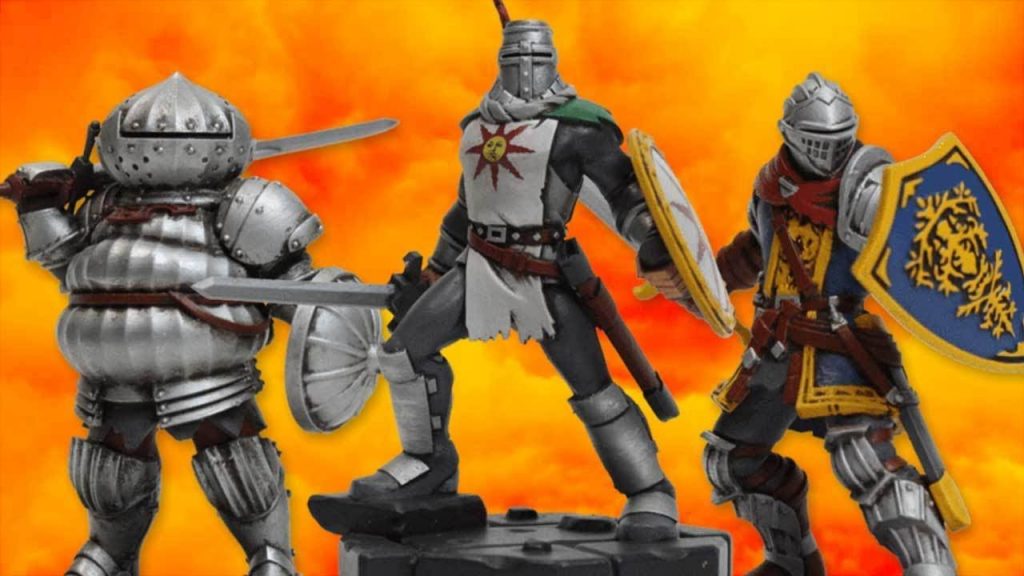
Give your PCs compatriots and allies. Even strange allies. Bring back old antagonists and rivals to help them overcome a great obstacle (Realpolitik). Dire straits and strange bedfellows, even better if your players can’t trust their new turncoat allies. And they absolutely should be wary. Those allies are like to have their own goals once the current threat is over. Consider the Iron Curtain and Cold War in the wake of World War II. Or the Chinese Civil War, which paused during WWII. Only after Japanese surrender and the end of the war did the civil war start anew.
Nothing works to make your game world a moving, organic creature like PCs witnessing factions work with and against each other.
Failure Builds Character
In Character Spotlights, I noted the contemporary RPG philosophy that DMs should be on their player’s side. But, that can go too far. I can say from personal player experience. A DM pulling punches is far less enjoyable than a total party kill. When you remove failure from the table you remove the stakes and thus the tension from your game.

I mean, why even roll dice (the agents of chance) if there’s no probability; the outcome is absolute?
I want to tell you right now, as a game master in any rules system, it’s OK to let the party fail. Critical Role. To the DM and cast’s credit they did not walk back Mollymauk’s death.* Even though it wasn’t a particularly heroic or self sacrificing death they let it happen. Sometimes death in D&D is a sequence of poor decisions and die rolls. Player character failure is an important and necessary part of the game. PC death being the most extreme example.
If your players fail to stop the evil cult’s ritual, let them fail. You should be excited. Your players just gifted you two adventures for the price of one. Now the PCs have to deal with whatever evil is unleashed on the world due to their failure. And they have to deal with the fallout of their failure. Maybe it’s some more Inigo Montoya Effect, more Obstacles, some Hiccups even.
Any failure like this should also be a character development moment. Does this change the PCs’ motivations and goals? How do they respond to the change in public opinion?
While your PCs should be defined by their successes, they should be shaped by their failures.
*At time of writing it's been half a year since Mollymauk's death, that's beyond the spoiler grace period. Oh, and Bruce Willis was dead the whole time.
Small Stories
This is one of the biggest missteps of the neophyte DM. Live stream games, campaign setting splat books, and even the DMG focus on world building. Many inexperienced DMs think you have have to go big or go home.
That’s a storytelling fallacy. The best stories even ones that happen against a grand backdrop are intensely personal tales. Take a moment to think of the works of Shakespeare. The bard’s works focus on important, powerful people, but are personal stories of their challenges and flaws. For something a bit more modern, consider Band of Brothers. It’s about US Army’s Easy Company during the invasion of Europe in WWII. But, each story is a dramatic snippet focused on a person/small group and their struggles.

You can’t have the PCs save the world in every adventure. Simple adventures telling small stories focus on the personal stakes of those involved. Even with big, epic adventures. It’s not about all the people that will die if they fail, it’s about how friends and family will be impacted by a failure. And that person, that NPC, is fully aware of the stakes and overwhelmed by the situation.
Intrinsic Trumps Extrinsic
Many experienced D&D players know of Monty Haul. But, just in case, here’s a link to get the rundown: Monty Haul.
I’m of a mindset that your PCs shouldn’t be adventuring for experience, gold, or magic items. There should be something beyond quantifiable rewards to motivate characters to adventure. Like in Small Stories, there’s no good story that follows a few people doing a straightforward job, getting paid, and walking away. It may be necessary to start your game with a generic adventure like that. You probably won’t have the luxury of creating session one with full buy-in from your players. Consider it a prologue to the real game.
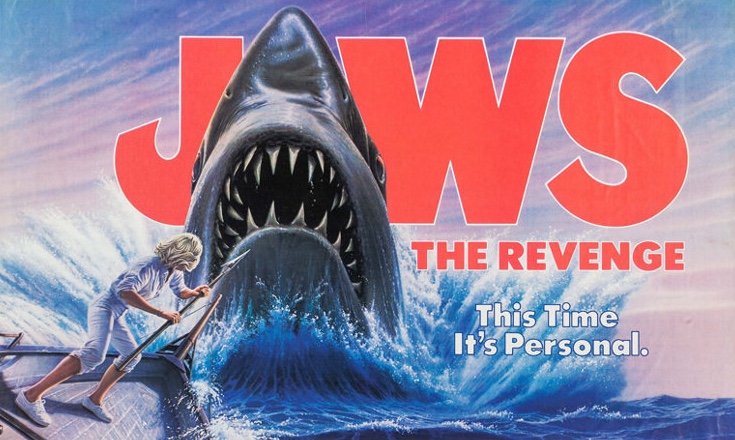
Get your players invested in the game. Their characters should be adventuring for personal motivations. You helped to develop them during character creation, remind your players of the specifics. Does the PC have a sense of duty, do they seek glory, accolades and fame, influence, maybe social escalation? What about a peasant PC who works hard to make their way through the echelons of society to petition the ruler to make a law change that personally benefits the hero’s family for the better?
Your campaign should be about what the PCs do and why. It shouldn’t be about accumulating wealth or mechanical power through leveling. Fifth edition is great and has many strong points, but arguably its weakest is what to do with all the money adventurers gain. In early editions, PCs would spend money on followers, retinue, and capital investment. People adventured as a short way to wealth and status. If a PC was lucky enough to survive to the mid-levels they retired from adventuring and became a landed noble or researched arcane secrets in a wizard tower. There were no 20th level PCs running around clearing out dungeons. Too dangerous.
Third and fourth edition both had a robust magic item system allowing PCs to spend money creating, upgrading, and purchasing powerful magic items with their coin.
But, 5e doesn’t have that. There’s explicitly no magic item market and the game assumes a PC will continue adventuring with the same four people until they’re demi-god powerful. There’s no way designed for a PC to spend the filthy lucre they’re amassing.

As a DM it’s more imperative in 5e than any other edition to have your players focus on the intrinsic rewards for adventuring. Regular readers will know I barely give any hard treasure to my players. Magic items are rare and so is physical coin. Most people pay adventurers in trade and services or property. It’s then up to the adventurers to convert their rewards into coinage. For an entertaining brush with medieval trade and economics I cannot recommend Spice and Wolf enough.
But it’s not about the money. Again, consider JRR Tolkien. The dwarves’ quest in The Hobbit is to be rewarded with a kingdom, castle, and treasure hoard. But, any reader will tell you that’s not WHY the dwarves are questing. It’s about duty, honor, family, and the price of pride.
Focus your adventure rewards on what you can give the PCs they can’t trade to an NPC. One of my favorite tactics is the letter of introduction. Prior to modern times one of the only ways to verify a stranger’s identity was a letter of introduction. Something a mutual acquaintance would write as a sort of personal reference letter. Letting someone know you were one of the more OK murderhobos. Do a quest for this minor noble and she can introduce you to her cousin in the port city. A person who has more money, yes, but also more influence and acquaintances with clout than the original quest giver.
Bonus Secret: Don’t Jump the Shark
Target an end when you’re drafting your campaign. You know the worst thing about American television, especially sitcoms? They go on and on, season after season, with little growth or change in the characters. Did you also know the vast majority of RPG campaigns just fizzle out?

Make a finish line for your campaign. I feel many people don’t believe that makes a campaign better until they experience it. I know I didn’t. Keep your campaign short and tight. A short campaign with a fulfilling end is better than an epic campaign that burns out half-finished. The best part about short campaigns? You can always come back to the characters and the world. Prequels, sequels, gaidens, and alternate histories are possible.
That’s it. Ten Secrets to Creating a Great Campaign. Do your best to incorporate these secret techniques and you’ll crush it behind the screen in your next campaign. Let’s fire through them once more in a quick summary.
10 Secrets to Creating a Great D&D Campaign
- Make your adventures easy for players to remember.
- Multiple factions working towards their goals will keep your players on their toes.
- Create obstacles, let your players figure out how to overcome them.
- Adding tiny obstacles to your adventures makes mountains with molehills.
- Remind your players of their successes/failures with NPCs working with/against them.
- Make adventures personal for the player characters by mining their backstories.
- The party isn’t alone. Many stand against the evils of your world who can be unlikely allies.
- PCs are known by success, but forged by failure.
- Keep the stories personal. Even Star Wars boils down to daddy issues.
- Can’t Buy Me Love. Feature rewards that can’t be measured in GP.
Bonus Secret
Failing to plan is planning to fail. For success, plan an end goal to your campaign.
